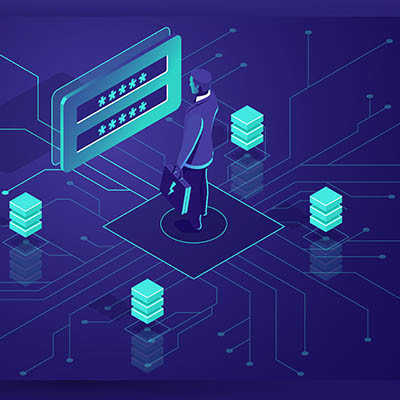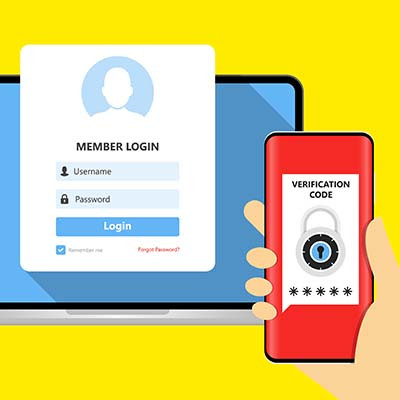A data breach is no joke, and it can take many forms. Whether it’s a case of confidential data being viewed, copied, stolen, or destroyed, a data breach cannot be ignored. Let’s take a look at some of the various causes of business data breaches and what you can do to prevent them from sinking your organization.
BlackCSI Blog
To an extent, we all know how important security is, but unless you are making it an integral part of your operations, chances are you are not doing enough to keep it secure from threats. Your network security might be one of the most critical parts of securing your organization’s future, and not for the reasons you might expect.
When it comes to cybersecurity, businesses have a lot to worry about, with the costs associated with protecting a network (or responding to failed attempts to protect your network) dominating these costs. While it is incredibly important to protect your business in any way possible, it is often not enough, and even the most careful companies fall victim to attacks.
When people talk about network security, it’s just like they are talking about any other subject, the most terrible and devastating of the bunch is all that is spoken about. In the case of malware, there is a lot of information about ransomware going around out there because it is largely the worst type of ransomware there is for any organization. Unfortunately, malware is a vast and largely misunderstood thing. Today, we thought we would briefly go through modern malware so you can identify if you are a victim or not.
Have you ever heard of the concept of going passwordless? Considering how passwords have been central to data security and authentication for so long, you might be a little hesitant about the idea. However, data show that there are better options out there. Here are some of the better passwordless options your organization can implement.
Using email to trick users is something that hackers have done for ages, but they usually find themselves tucked away in the spam folder where they belong, or blocked entirely by enterprise-level content filters. Hackers, however, are a crafty lot, and they have discovered ways to break through these measures through the use of a surprising third party: social media websites.
All businesses must make securing their infrastructures and reinforcing cybersecurity practices a priority, especially as we move into the new year. This is a concept that involves securing the network, infrastructure, and data from the countless threats out there. Here are three of the most important issues to keep in mind when building your cybersecurity strategy for the new year.
There are all kinds of threats out there that can make things difficult for your business, but one of the biggest threats from this past year was ransomware. Ransomware encrypts data on the victim’s device so that it is inaccessible without the decryption key. Hackers have been successful with these extortion methods, as well as many others, yet ransomware continues to be a serious source of anxiety for businesses of all sizes and industries.
While considering cybercrime, it’s very easy to slip into a dichotomy: hackers are bad, while not-hackers are good. Like most things in life, however, the truth is that there is a spectrum to cybercrime. Let’s take a few moments to consider a few different types of hackers, and the hats that their roles determine they wear.
Ransomware is one of the worst threats you can encounter, and the first half of 2021 saw more large-scale ransomware attacks against both individuals and businesses than ever before. A new threat, however, promises to disrupt this trend, and it’s one that you might not have considered: fake ransomware attacks.
Some businesses struggle to obtain the appropriate software solutions, especially if they are on a budget. Some even choose to take advantage of free, open-source software simply because it helps their bottom line. There are some benefits to using open-source software, but there are also dangers involved.
It’s the holiday season, and with it comes a multitude of hackers trying to cash in on everyone’s online purchases. These phishing scams always increase when the holiday season comes around, so it’s best to stay vigilant so that you don’t give yourself the gift of sadness this year. One such threat is already here, and it’s voice spoofing of Amazon orders.
Businesses and their employees ultimately need a lot of different online accounts, which means there are a lot of passwords that need to be sorted. To assist with this, many have turned to using password managers—applications that store passwords in an encrypted vault. There are a lot of reasons that these password managers are a popular choice. Let’s go over a few of them.
Network security is not the easiest thing to implement for your business, and you definitely need someone trained in this topic to be the one behind the wheel. Thankfully, the correct solutions can make this much easier to pull off. Here are some of the best and most important security solutions you should be considering for your organization.
Many people use smart speakers throughout their day-to-day lives, whether it’s as a personal assistant or to control their home entertainment system. However, one of the topics up for discussion is how secure these devices actually are and whether or not we should be concerned about them. Just how secure are your smart speakers and what can you do about their security?
Do you remember the series of high-profile infrastructure attacks that occurred not so long ago this year? Well, now the United States government is taking matters into its own hands by ordering the patching of various vulnerabilities in affected systems. It’s a massive effort to thwart hackers and other cyberthreats from taking root in vulnerable systems.
Smart devices have enabled individuals and businesses to push the limits of connectivity, allowing them to have unprecedented amounts of control over their offices and homes. People can turn down their thermostats or lock the front door with the click of a button, as well as control how much power their homes consume. However, security is a pain point for these types of connected devices.
There is such a heavy focus on malware that targets desktop PCs, laptops, and servers, but there are mobile malware types too, one of which is TangleBot, a pesky malware that hits the Android operating system. This particular threat is dangerous due to the increasing reliance on mobile technology in today’s workplace.




















